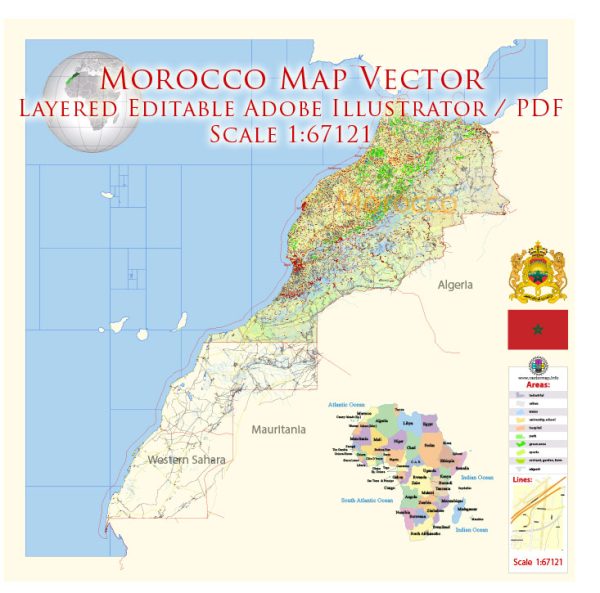Morocco has a rich history of urban development that spans centuries, shaped by a confluence of indigenous, Arab, Berber, and European influences. The country’s urban history is marked by a blend of traditional and modern elements, reflecting its diverse cultural and historical heritage. Here is a brief overview of Morocco’s urban development:
- Ancient Period:
- Phoenician and Carthaginian Influence (8th – 5th centuries BCE): The earliest urban centers in Morocco were established by the Phoenicians and later influenced by Carthaginian civilization. The city of Carthage had a significant impact on trade and culture in the region.
- Roman Period (3rd century BCE – 5th century CE): During the Roman era, cities like Volubilis (near present-day Meknes) and Chellah (near Rabat) thrived as important urban centers. These cities were characterized by Roman architecture, including temples, forums, and aqueducts.
- Islamic Period:
- Arab-Berber Conquests (7th – 11th centuries): The Arab-Berber conquests led to the establishment of Islamic urban centers, such as Fes, Marrakech, and Meknes. These cities became centers of Islamic learning, trade, and culture, with intricate architectural designs, including mosques, madrasas, and palaces.
- Almoravid and Almohad Dynasties (11th – 13th centuries): Marrakech, founded by the Almoravids, became a major political and cultural center. The Almohads further developed Marrakech and introduced innovative architectural styles, exemplified by the Koutoubia Mosque.
- Merinid and Saadian Periods (13th – 17th centuries):
- The Merinid dynasty contributed to the urban development of Fes, transforming it into an intellectual and cultural hub. The famous Bou Inania Madrasa in Fes is an example of Merinid architecture.
- The Saadian dynasty, particularly during the reign of Ahmad al-Mansur, played a key role in the expansion and embellishment of Marrakech. The Saadian Tombs and the El Badi Palace are notable architectural achievements from this period.
- Colonial Era (19th – 20th centuries):
- The French and Spanish colonial presence in Morocco had a significant impact on urban development. European architectural styles were introduced in cities like Casablanca, Rabat, and Tangier. The French influenced the design of Casablanca as a modern, Art Deco city, while Rabat became the administrative capital.
- Post-Independence (1956 – present):
- Morocco gained independence in 1956, leading to a period of modernization and urbanization. Cities like Casablanca and Rabat experienced rapid growth, with the construction of modern infrastructure, residential areas, and commercial districts.
- Recent urban development initiatives include the construction of new economic zones, transportation networks, and the preservation of historical sites to promote tourism.
Overall, Morocco’s urban development is a dynamic narrative that reflects a synthesis of diverse cultural influences across different historical periods. Today, its cities showcase a unique blend of ancient traditions and modern aspirations.


 Author: Kirill Shrayber, Ph.D.
Author: Kirill Shrayber, Ph.D.